Romaine Lettuce with Chinese Sesame Dressing
A riff on the Sichuan classic veggie side "majiang fengwei"
I had a silly epiphany a few weeks ago while writing about sesame oil and paste: isn’t romaine lettuce just like celtuce leaves? I was trying to recreate majiang fengwei (麻酱凤尾), a Sichuan cold dish that features celtuce leaves dressed in sesame sauce.
For those unfamiliar, celtuce (wo sun 莴笋)—also known as stem lettuce or Chinese lettuce—is a beloved vegetable in Chinese cuisine. While it’s mainly prized for its crisp stems, its leaves (wo sun ye 莴笋叶) are an affordable and popular ingredient on Sichuanese tables. Often sold separately, the leaves are typically quickly stir-fried, blanched, or served in noodle soups or hotpot. In Sichuan, they’re poetically nicknamed feng wei (凤尾), or “phoenix tails,” for their tender, elegant shape.
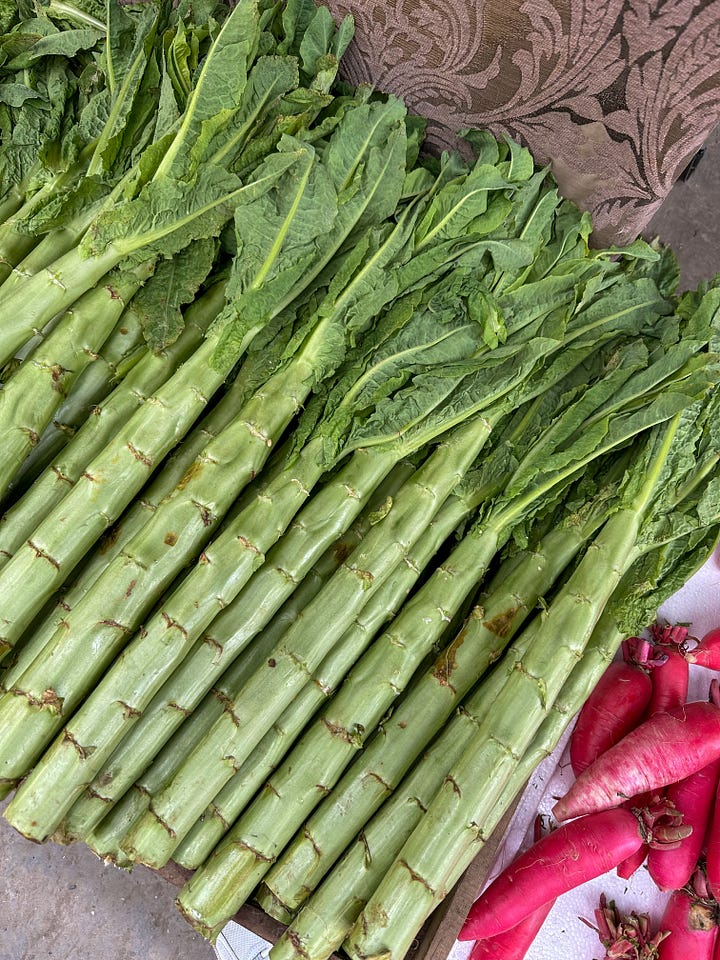
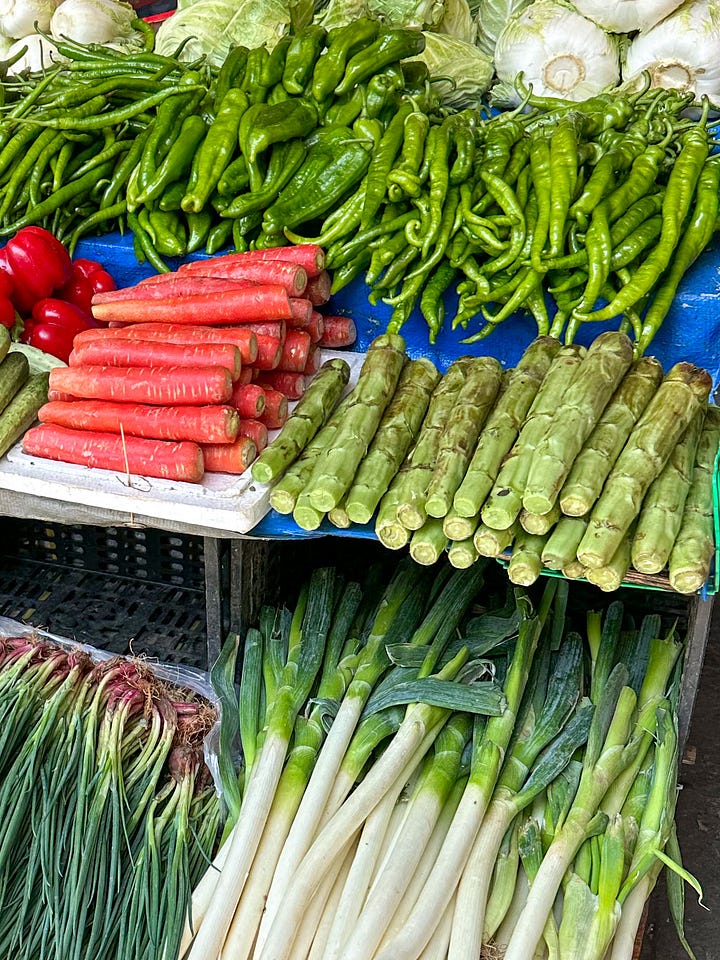
Living in Berlin, I rarely see celtuce in even the best-stocked Asian supermarkets. When I do, the imported ones are often not fresh—the wilted leaves are a far cry from the vibrant greens you’d find in a Sichuan farmer’s market. But after nearly 10 years of living here, it finally occur to me: romaine lettuce, the common salad green on European tables, belongs to the same lettuce family as celtuce. Curious, I grabbed a bag of romaine hearts and decided to try them with a Chinese sesame dressing. It worked beautifully! After posting it on instagram, several Chinese diaspora replied, saying they’d also been sleeping on this simple substitute for years.
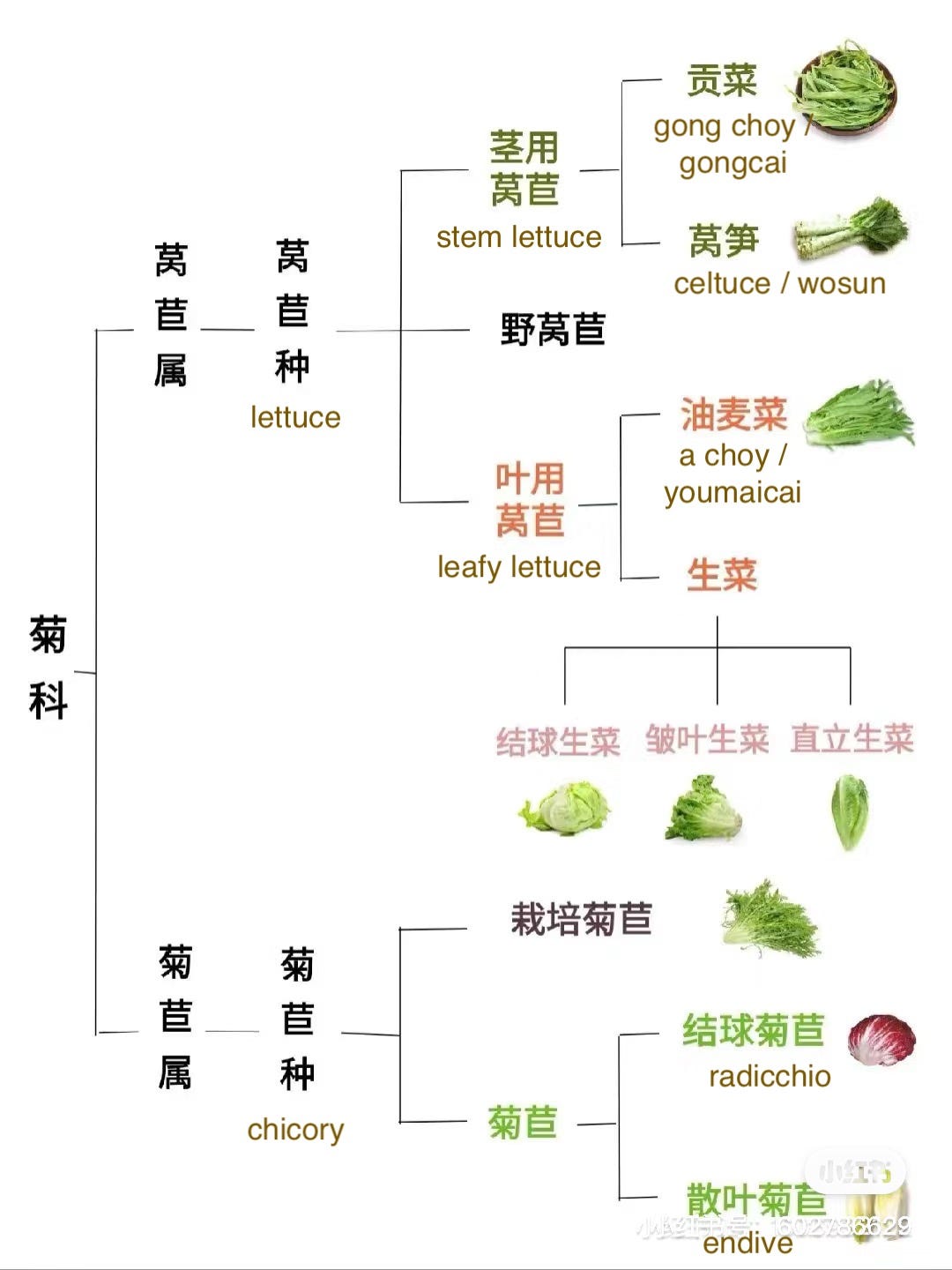
Sichuan Sesame Paste Flavor
The dressing is inspired by the majiang wei (麻酱味) flavor profile—one of complex flavors in Sichuan cuisine. According to the Encyclopedia of Sichuan Cuisine (川菜烹饪事典), this rich, nutty flavor combines Chinese sesame paste, sesame oil, Sichuan salt, MSG, and concentrated chicken stock. For certain dishes, soy sauce or chili oil may also be added, as in majiang fengwei.
The book notes that this sesame-based dressing was also traditionally used for cold dishes featuring ingredients like fish maw, abalone, or pork tendon. Nowadays, though, it’s most commonly used to dress crunchy vegetables. In northern China, you’ll find a richer variation of the dressing made with black vinegar, dark soy sauce, and honey. This version is often used to dress napa cabbage in a dish named Qianlong Baicai (乾隆白菜), after the Qing dynasty emperor.
For my recipe, I decided to char the romaine lettuce instead of blanching it, as is typical in Chinese recipes. Charring adds a smoky flavor and gives the dish an aesthetically pleasing look. That said, you can enjoy the lettuce raw (simply separate the leaves into single layers) or blanch it for a few seconds. Other lettuce varieties, such as iceberg, larger romaine heads, or Taiwanese lettuce (a-choy or youmaicai in Asian markets), would also work well here. If you enjoy a bit acidity, add a splash of vinegar to cut through the rich flavors (I personally prefer it without for this specific recipe).
Recipe: Romaine Lettuce with Chinese Sesame Dressing
Servings: 2
Ingredients
For the lettuce
4 heads little gem lettuce/romaine hearts (280 g / 10 oz)
1 tsp vegetable oil
For the dressing
1 tbsp Chinese sesame paste
1 tsp toasted sesame oil
¼ tsp white sugar
⅛ tsp salt
1 tsp chili oil
a pinch of MSG (optional)
toasted white sesame seeds (for garnish)
Instructions
Thin out the sesame paste with 1–2 tbsp of water, adding the water slowly and mixing with a small whisk or spoon until you reach a smooth, yogurt-like consistency. Add the sesame oil, sugar, salt, chili oil, and MSG (if using). Whisk until well combined.
Remove the wilted outer leaves of the romaine lettuce. Slice each lettuce head in half lengthwise through the core. Clean and drain completely. Rub the cut side of each half with some vegetable oil.
Heat a well-seasoned pan over medium-high heat until hot. Place the lettuce halves cut-side down in the pan and char for about 20-30 seconds. Press down gently with a spatula to get a nice sear.
Before serving, drizzle the sesame dressing over the charred lettuce and garnish with toasted sesame seeds, if desired.
Variations
Cucumber:
This dressing pairs wonderfully with cucumber, making a dish called majiang huanggua(麻酱黄瓜). For the amount of the dressing, use one English cucumber (or 2–3 Persian cucumbers), remove the core, and cut into sticks (or smash it for extra texture, like in this recipe). Drizzle the dressing over the cucumber.
Other Vegetables:
This sesame dressing works well with blanched green asparagus, carrots and cabbage slaw.
Another easy Sichuan veggie side to try:

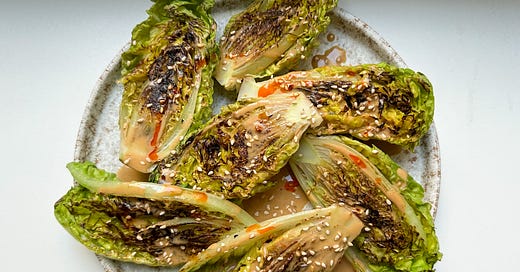



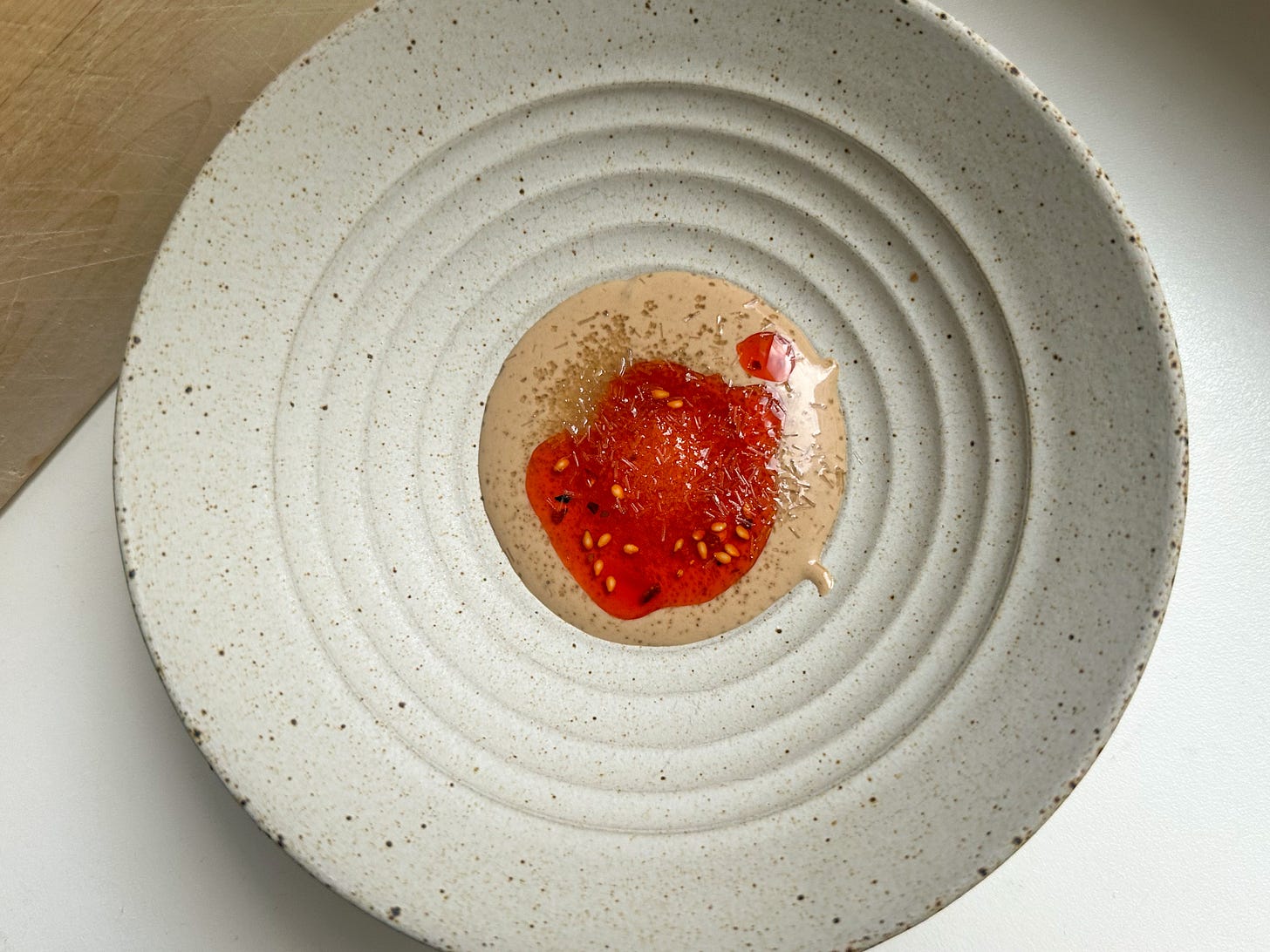
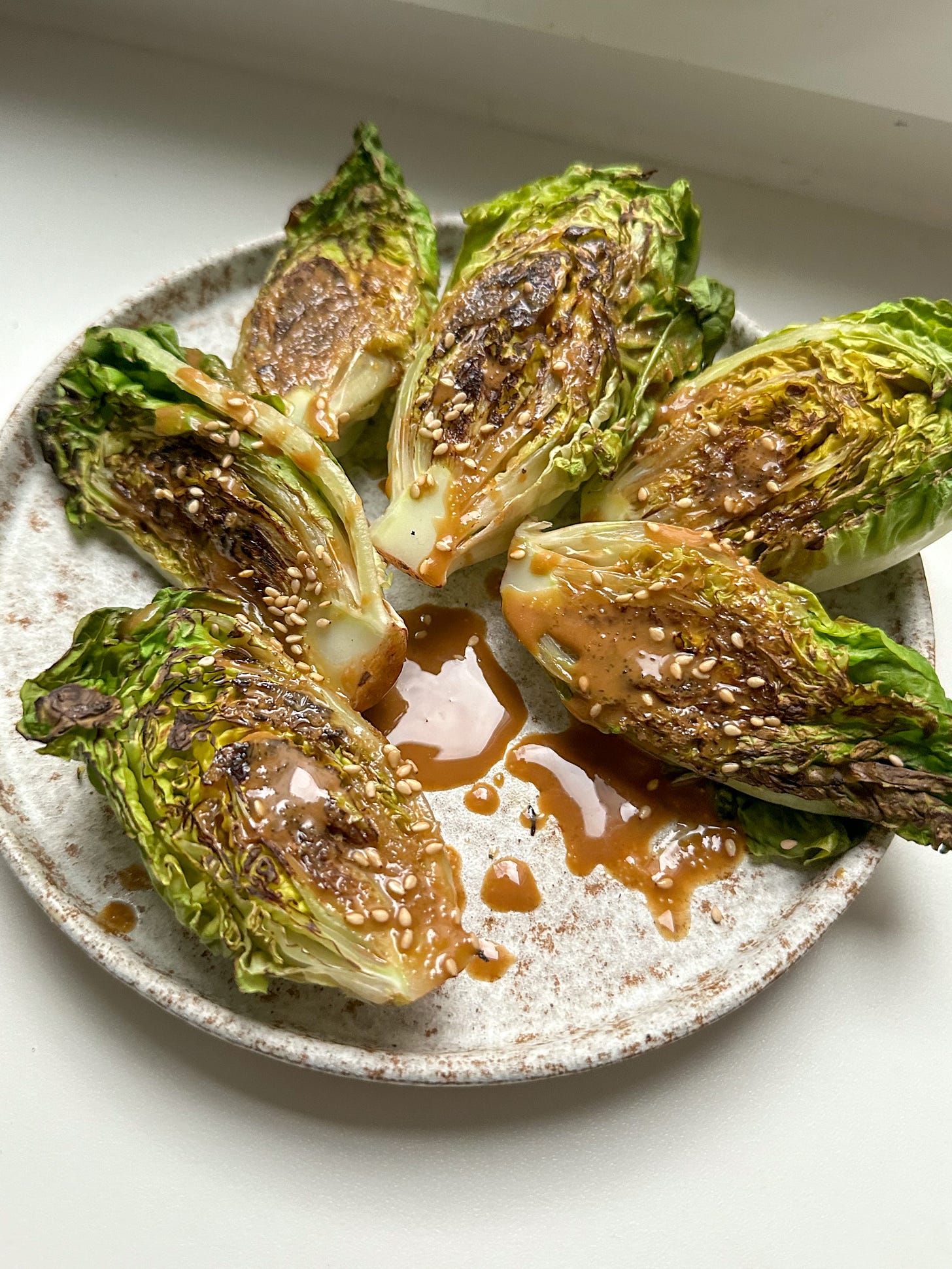
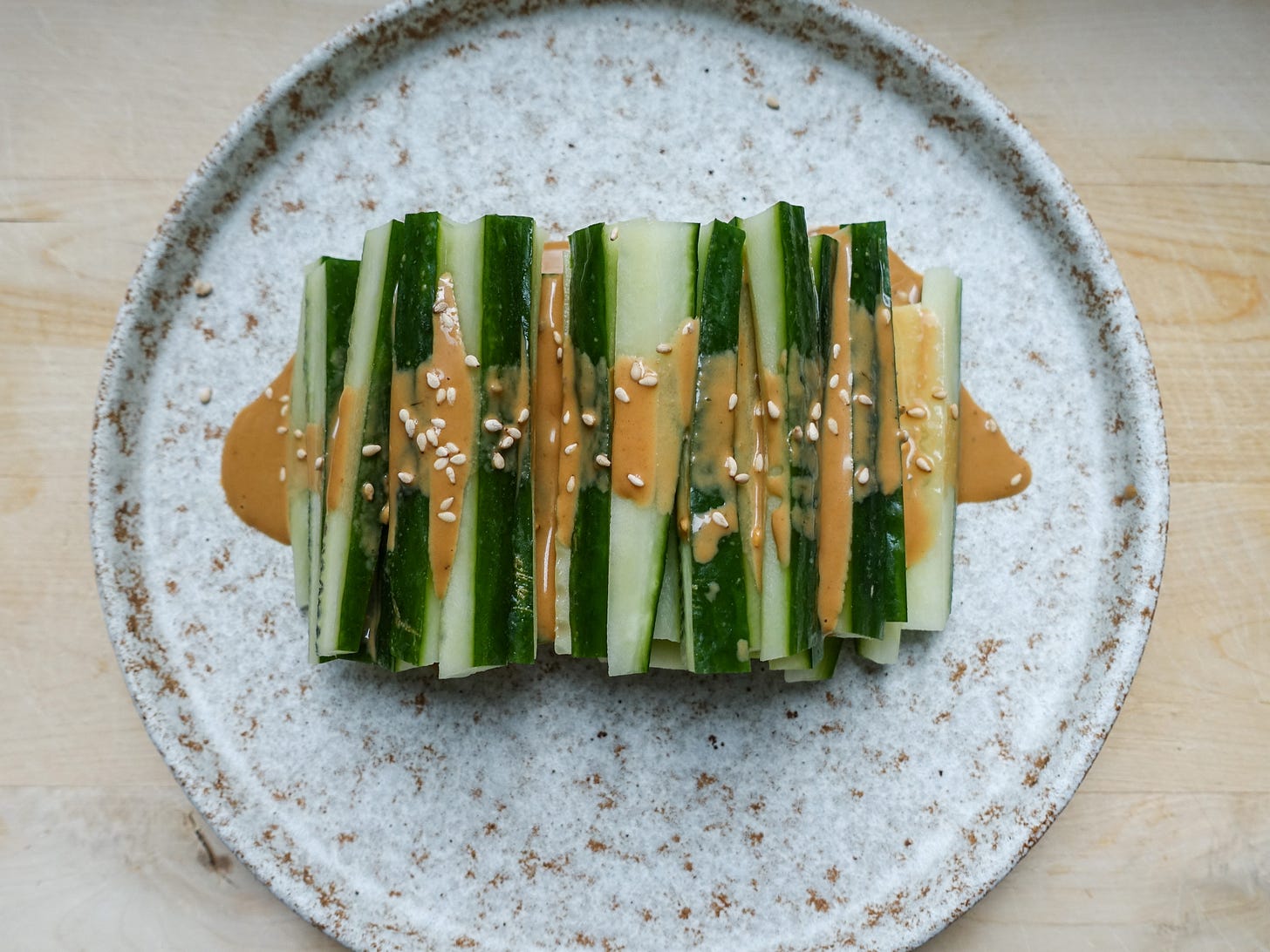
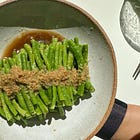
What's Sichuan salt?
Looks so yummy and versatile!! Also loved the lettuce family tree.